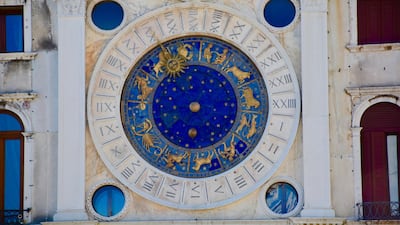If you regularly read your horoscope, you will have likely seen news circulating over the past few days that suggests your star sign has changed.
According to social media, thanks to Nasa’s discovery of a 13th zodiac sign, star signs have shifted for many people, leaving them to question everything they thought they knew.
This new star sign – Ophiuchus, known as the serpent bearer – sits between Scorpio and Sagittarius in the Zodiac calendar, and affects anyone born between November 29 and December 17.
However, Ophiuchus is not new. In fact, astrologers have known about the constellation for hundreds of years, and the idea that it should become an official zodiac sign was first floated back in the 1970s.
So, the headlines are fake news, Nasa has not just discovered Ophiuchus, nor has it updated the zodiac calendar. In fact, Nasa – a scientific centre for space research – has nothing to do with astrology, which is often rejected by the scientific community and has no proven basis.
People are likely talking about this again after a blog post from 2016 on Nasa website Space Place resurfaced. It's aimed at children, and this isn't the first time it has gone viral and caused people to question their star signs.
The post explains how the zodiac chart was created more than 3,000 years ago by the Babylonians, who, despite recognising 13 star constellations in the solar system, chose to create the chart based on 12 to coincide with the months of the year.
In fact, it is acknowledged that there are as many as 48 star constellations, although many of them are much smaller than the 12 used as star signs.
Ophiuchus is found to the northwest of the centre of the Milky Way. The idea of making it an official star sign appears to have originated in 1970 with Stephen Schmidt's suggestion of a 14-sign zodiac, also including Cetus as a sign.
That never happened. And fast forward 50 years, the 12-sign zodiac calendar remains.
So, while this may be new information to many astrology fans who were not aware of the existence of Ophiuchus, there’s no need to panic, your star sign is the same as it has always been.
What are the main cyber security threats?
Cyber crime - This includes fraud, impersonation, scams and deepfake technology, tactics that are increasingly targeting infrastructure and exploiting human vulnerabilities.
Cyber terrorism - Social media platforms are used to spread radical ideologies, misinformation and disinformation, often with the aim of disrupting critical infrastructure such as power grids.
Cyber warfare - Shaped by geopolitical tension, hostile actors seek to infiltrate and compromise national infrastructure, using one country’s systems as a springboard to launch attacks on others.
Sarfira
Director: Sudha Kongara Prasad
Starring: Akshay Kumar, Radhika Madan, Paresh Rawal
Rating: 2/5
Lexus LX700h specs
Engine: 3.4-litre twin-turbo V6 plus supplementary electric motor
Power: 464hp at 5,200rpm
Torque: 790Nm from 2,000-3,600rpm
Transmission: 10-speed auto
Fuel consumption: 11.7L/100km
On sale: Now
Price: From Dh590,000
Inside%20Out%202
%3Cp%3E%3Cstrong%3EDirector%3A%C2%A0%3C%2Fstrong%3EKelsey%20Mann%3C%2Fp%3E%0A%3Cp%3E%3Cstrong%3EStarring%3A%3C%2Fstrong%3E%C2%A0Amy%20Poehler%2C%20Maya%20Hawke%2C%20Ayo%20Edebiri%3C%2Fp%3E%0A%3Cp%3E%3Cstrong%3ERating%3A%20%3C%2Fstrong%3E4.5%2F5%3C%2Fp%3E%0A
The specs
Engine: 4.0-litre V8 twin-turbocharged and three electric motors
Power: Combined output 920hp
Torque: 730Nm at 4,000-7,000rpm
Transmission: 8-speed dual-clutch automatic
Fuel consumption: 11.2L/100km
On sale: Now, deliveries expected later in 2025
Price: expected to start at Dh1,432,000
The specs: McLaren 600LT
Price, base: Dh914,000
Engine: 3.8-litre twin-turbo V8
Transmission: Seven-speed automatic
Power: 600hp @ 7,500rpm
Torque: 620Nm @ 5,500rpm
Fuel economy 12.2.L / 100km
THREE
%3Cp%3EDirector%3A%20Nayla%20Al%20Khaja%3C%2Fp%3E%0A%3Cp%3EStarring%3A%20Jefferson%20Hall%2C%20Faten%20Ahmed%2C%20Noura%20Alabed%2C%20Saud%20Alzarooni%3C%2Fp%3E%0A%3Cp%3ERating%3A%203.5%2F5%3C%2Fp%3E%0A
The design
The protective shell is covered in solar panels to make use of light and produce energy. This will drastically reduce energy loss.
More than 80 per cent of the energy consumed by the French pavilion will be produced by the sun.
The architecture will control light sources to provide a highly insulated and airtight building.
The forecourt is protected from the sun and the plants will refresh the inner spaces.
A micro water treatment plant will recycle used water to supply the irrigation for the plants and to flush the toilets. This will reduce the pavilion’s need for fresh water by 30 per cent.
Energy-saving equipment will be used for all lighting and projections.
Beyond its use for the expo, the pavilion will be easy to dismantle and reuse the material.
Some elements of the metal frame can be prefabricated in a factory.
From architects to sound technicians and construction companies, a group of experts from 10 companies have created the pavilion.
Work will begin in May; the first stone will be laid in Dubai in the second quarter of 2019.
Construction of the pavilion will take 17 months from May 2019 to September 2020.
MATCH INFO
Uefa Champions League final:
Who: Real Madrid v Liverpool
Where: NSC Olimpiyskiy Stadium, Kiev, Ukraine
When: Saturday, May 26, 10.45pm (UAE)
TV: Match on BeIN Sports
Recent winners
2002 Giselle Khoury (Colombia)
2004 Nathalie Nasralla (France)
2005 Catherine Abboud (Oceania)
2007 Grace Bijjani (Mexico)
2008 Carina El-Keddissi (Brazil)
2009 Sara Mansour (Brazil)
2010 Daniella Rahme (Australia)
2011 Maria Farah (Canada)
2012 Cynthia Moukarzel (Kuwait)
2013 Layla Yarak (Australia)
2014 Lia Saad (UAE)
2015 Cynthia Farah (Australia)
2016 Yosmely Massaad (Venezuela)
2017 Dima Safi (Ivory Coast)
2018 Rachel Younan (Australia)


